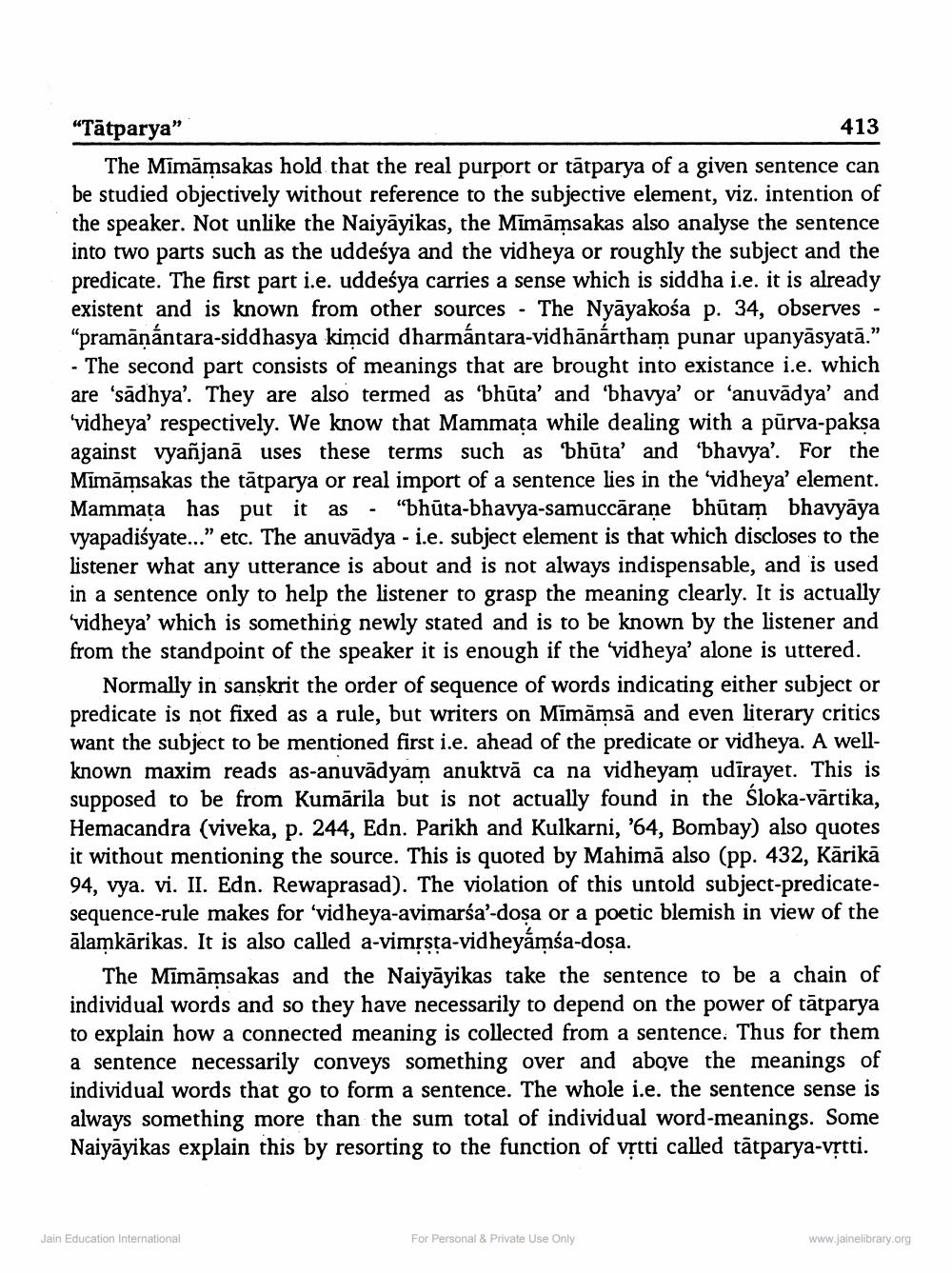________________
"Tātparya"
413
The Mimāmsakas hold that the real purport or tatparya of a given sentence can be studied objectively without reference to the subjective element, viz. intention of the speaker. Not unlike the Naiyāyikas, the Mimāmsakas also analyse the sentence into two parts such as the uddeśya and the vidheya or roughly the subject and the predicate. The first part i.e. uddeśya carries a sense which is siddha i.e. it is already existent and is known from other sources - The Nyayakośa p. 34, observes - "pramāṇántara-siddhasya kimcid dharmántara-vidhānártham punar upanyāsyatā."
The second part consists of meanings that are brought into existance i.e. which are 'sādhya'. They are also termed as 'bhūta' and 'bhavya' or 'anuvādya' and 'vidheya' respectively. We know that Mammața while dealing with a pūrva-pakṣa against vyañjana uses these terms such as 'bhūta' and 'bhavya'. For the Mimāmsakas the tatparya or real import of a sentence lies in the 'vidheya' element. Mammata has put it as "bhūta-bhavya-samuccāraṇe bhūtam bhavyāya vyapadiśyate..." etc. The anuvadya - i.e. subject element is that which discloses to the listener what any utterance is about and is not always indispensable, and is used in a sentence only to help the listener to grasp the meaning clearly. It is actually 'vidheya' which is something newly stated and is to be known by the listener and from the standpoint of the speaker it is enough if the 'vidheya' alone is uttered.
Normally in sanskrit the order of sequence of words indicating either subject or predicate is not fixed as a rule, but writers on Mimamsā and even literary critics want the subject to be mentioned first i.e. ahead of the predicate or vidheya. A wellknown maxim reads as-anuvadyam anuktvā ca na vidheyam udirayet. This is supposed to be from Kumārila but is not actually found in the Śloka-vārtika, Hemacandra (viveka, p. 244, Edn. Parikh and Kulkarni, '64, Bombay) also quotes it without mentioning the source. This is quoted by Mahima also (pp. 432, Kārikā 94, vya. vi. II. Edn. Rewaprasad). The violation of this untold subject-predicatesequence-rule makes for 'vidheya-avimarśa'-dosa or a poetic blemish in view of the ālamkarikas. It is also called a-vimṛsta-vidheyámsa-dosa.
The Mimamsakas and the Naiyayikas take the sentence to be a chain of individual words and so they have necessarily to depend on the power of tātparya to explain how a connected meaning is collected from a sentence. Thus for them a sentence necessarily conveys something over and above the meanings of individual words that go to form a sentence. The whole i.e. the sentence sense is always something more than the sum total of individual word-meanings. Some Naiyayikas explain this by resorting to the function of vṛtti called tatparya-vṛtti.
Jain Education International
For Personal & Private Use Only
www.jainelibrary.org




